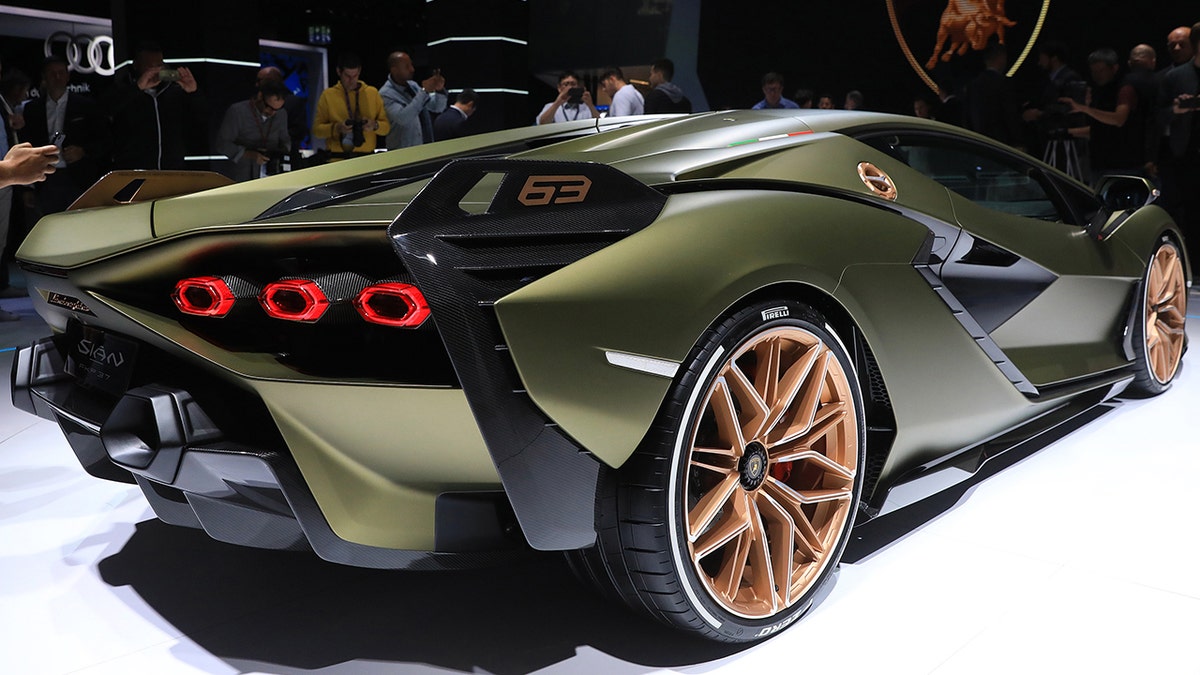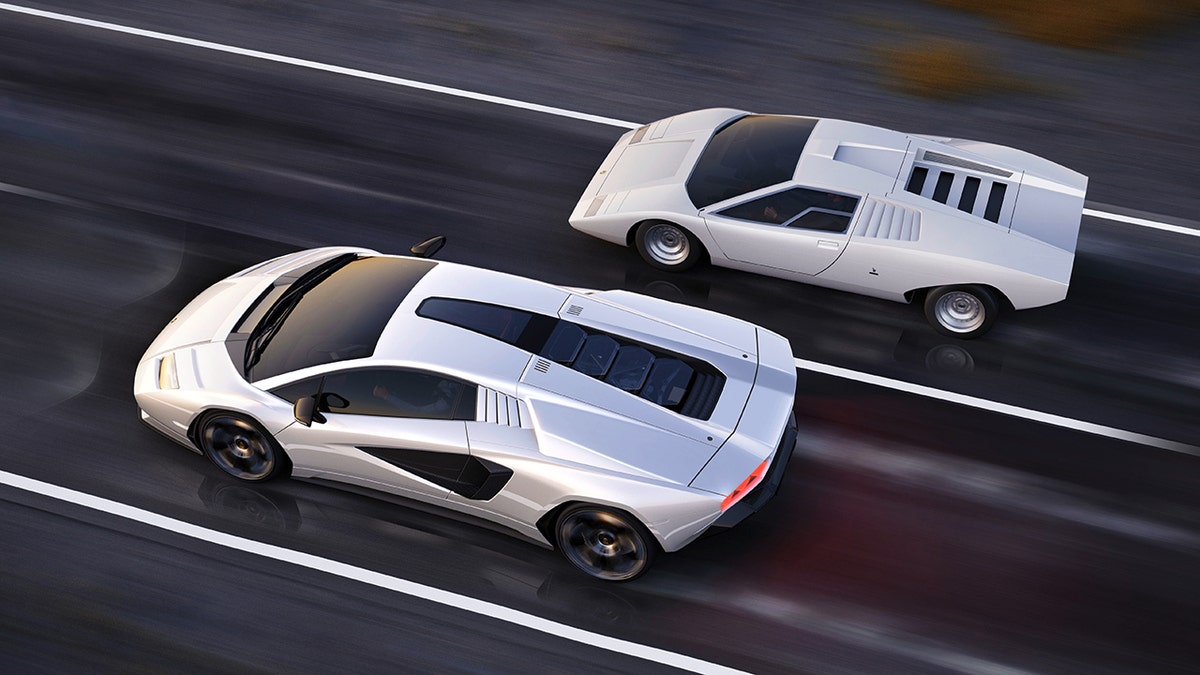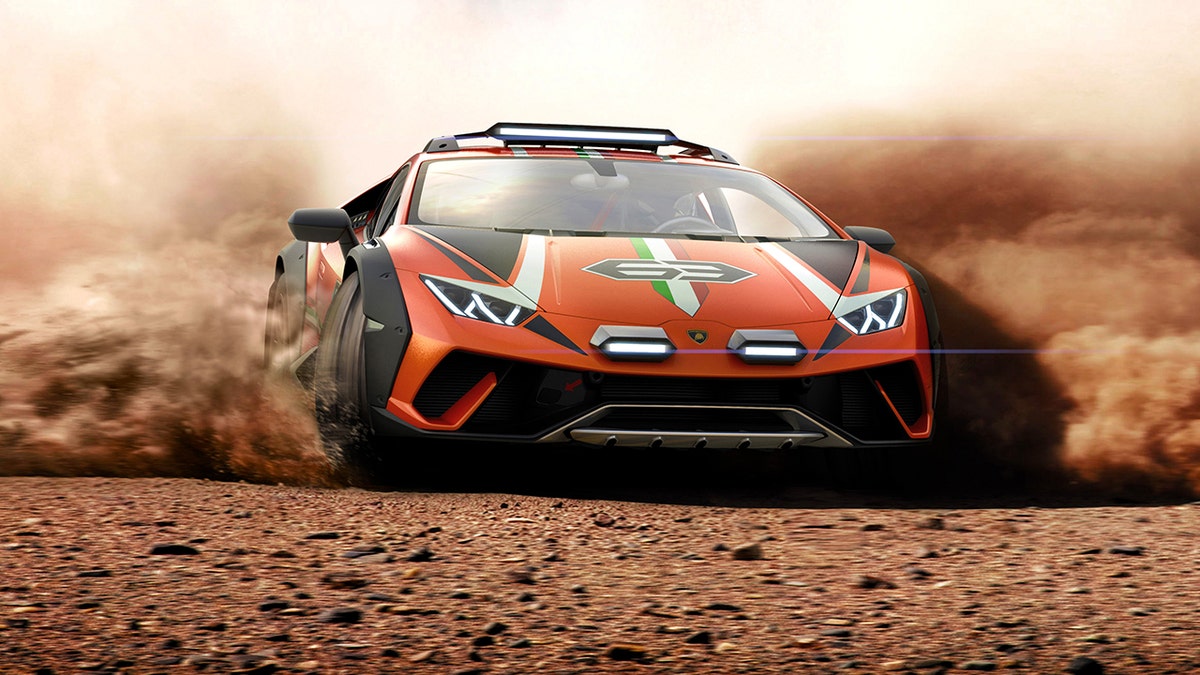The Lamborghini Aventador's life was longer than expected.
The supercar that first launched in 2011 and went out of production early this year was resurrected after 15 of the final cars were lost on the Felicity Ace cargo ship that sank in March.
Lamborghini rebuilt and restarted the production line to produce replacements, the last of which were completed this September.
Now it's getting ready to replace the Aventador altogether.
BIZARRE ‘NUDE’ LAMBORGHINI SOLD FOR $111,111

The Lamborghini Aventador Ultimae was the final version of the supercar. (Martyn Lucy/Getty Images)
A new V12-powered model is on the way that will be equipped with a hybridized powertrain, as will all of its models as they are refreshed in the coming years.
It's name and styling haven't been revealed yet, but Lamborghini CEO Stephan Winkelmann told Fox News Digital when the wraps are scheduled to come off.
"We’re going to have the first update of the car at the end of the first quarter of next year," Winkelmann said.

The Lamborghini Sian FKP 37 is a hybrid V12 supercar. (Martyn Lucy/Getty Images)
Lamborghini already has 3,000 orders for the car, which represents several years of production. Details on its powertrain, including what company Lamborghini is collaborating with on the electrification, will be released with the car.
Lamborghini has built a hybrid before that featured a unique powertrain which could preview the new car's. The Sian FKP 37 combined the Aventador's V12 with an electric motor powered by supercapacitors developed with MIT instead of batteries that allowed it to recapture energy more quickly as the vehicle slowed down and use it for a boost under acceleration.

The Sian uses supercapacitors instead of batteries. (Krisztian Bocsi/Bloomberg via Getty Images)
The output is rated at 803 horsepower and the car is capable of accelerating to 60 mph in just 2.8 seconds and reaching an electronically restricted top speed of 220 mph.
Only 82 coupes and roadsters were built with a starting price of $3.5 million, but the powertrain was used again for a run of 112 modernized tributes to the famous Lamborghini Countach.

The new Countach (bottom) was inspired by the original (top). (Lamborghini)
The new V12 car should cost a lot less than the Sian, but won't be cheap, as the Aventador listed for over $500,000.
It will be followed in 2024 by a hybrid Urus SUV and a successor to the entry-level Huracan sports car that's about half the price of the Aventador and will feature either a hybrid V8 or V10 powertrain.
LAMBORGHINI RECREATES THE ORIGINAL COUNTACH IT WRECKED IN 1974
After that things really start to get interesting.
Winkelmann said Lamborghini's first all-electric model is scheduled to arrive in 2028 and will be very different from the vehicles it currently builds.
"We’re looking into an innovative concept of adding a 2+2, so a two-door with 2+2 seats (full size front seats and small rear ones), but with more ground clearance and a very innovative body style, but with the desirable design of Lamborghini."

The Sterrato concept previews an upcoming Hurican model. (Lamborghini)
Lamborghini will soon be releasing an off-road version of the Huracan based on the previously revealed Sterrato concept that could offer an idea of what it has planned for the electric car.
CLICK HERE TO SIGN UP FOR OUR LIFESTYLE NEWSLETTER
The rest of Lamborghini's lineup may not follow it down the battery-powered path, however. It has been exploring the use of carbon-neutral synthetic fuel that could allow it to continue offering internal combustion cars with their signature screaming engines if the law allows it.
"This is something that we are still looking into, we have to see what the legislature is going to say in the next couple of years if there is an opportunity or a window open also for those types of cars with hybrids still in the 30s by utilizing synthetic fuel," Winkelmann said.
CLICK HERE TO GET THE FOX NEWS APP
Porsche, which is part of the Volkswagen Group with Lamborghini, recently invested in a Chilean company called HIF that is developing such a fuel, which combines hydrogen and atmospheric carbon into a gasoline substitute that is carbon-neutral and could be "used in today’s cars, ships and airplanes, with no technological modifications required," according to the company.
